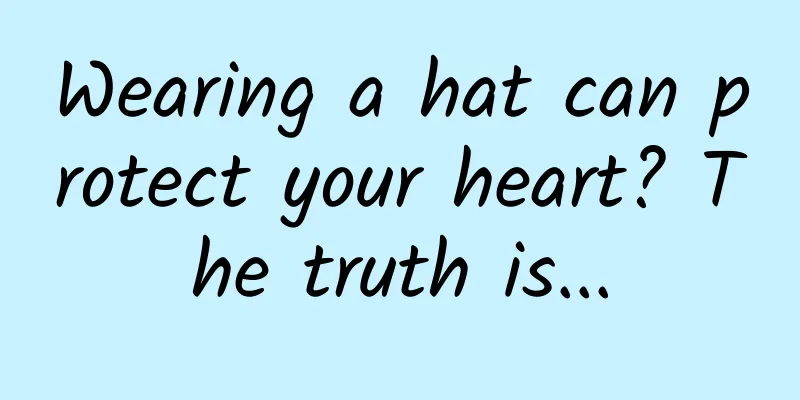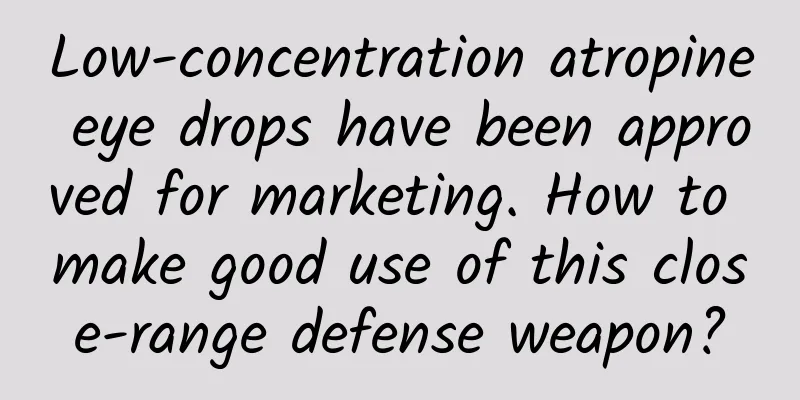Wearing a hat can protect your heart? The truth is...

|
Myth "Wearing a hat can protect your heart!" Recently there have been rumors online that "wearing a hat can protect your heart", and many people wonder if a small hat really has such magical powers? Rumor Analysis This statement over-associates the function of hats with health benefits, which is indeed a bit exaggerated. The main function of a hat is to protect the head from direct sunlight and cold weather, especially in cold environments, to prevent excessive body heat loss, thereby reducing the risk of cardiovascular disease to a certain extent. However, these effects of hats are not directly related to heart health. Measures to protect the heart usually include healthy diet, proper exercise, maintaining a good work and rest schedule, and controlling stress. Heart health depends more on long-term living habits and genetic factors rather than simply relying on external items. When winter comes, many people like to "fully arm themselves", especially wearing hats when going out. There is also a saying circulating on the Internet: wearing a hat can protect the heart. Network screenshots Do hats really have such magical effects? What health secrets are hidden in them? Today, let's analyze them one by one. Winter is a challenge to the cardiovascular system. Keeping warm is necessary Cold weather has many impacts on cardiovascular health, especially for the elderly and those at high risk of cardiovascular disease. First, low temperatures activate the body’s sympathetic nervous system (SNS), stimulating the activity of the renin-angiotensin system (RAS). This response causes vasoconstriction and increased blood pressure, which is the body’s self-protection mechanism to maintain core body temperature. However, if exposure to cold is prolonged or frequent, this response may turn into a pathological state, leading to persistent hypertension and increasing the risk of cardiovascular disease. [1] At the same time, cold temperatures also inhibit the production of nitric oxide (NO), an important substance that helps blood vessels dilate. Studies have found that under low temperature conditions, reduced NO production reduces vascular elasticity and increases vascular resistance, further driving up blood pressure. [1] In addition, cold exposure changes the balance of the endothelin system (ET system), increasing the production of endothelin-1 (ET-1) and enhancing its vasoconstrictive effect. This change not only increases the cardiovascular burden, but may also induce structural damage such as myocardial hypertrophy. [1, 2] More importantly, cold environments are also closely associated with acute cardiovascular events, such as myocardial infarction and acute coronary syndrome. The effects of low temperatures on these events are often delayed and can last for weeks. This may be related to increased blood pressure, impaired vascular function, and enhanced inflammatory responses. Although the human body will try to adapt to the stress of cold, these adaptive responses may evolve into health hazards if they are over-triggered. [1, 2] Studies have found that for every 1°C drop in temperature, cardiovascular disease-related mortality increases by 1.6% and morbidity increases by 1.2%.[3] Therefore, special attention should be paid to keeping warm in cold seasons to reduce the risk of cardiovascular disease. Copyrighted stock images, no reproduction is authorized There are so many ways to keep warm. Why bring up the hat alone? First, there is a false myth that “up to 50% of heat is lost through the head in winter”, but in reality, the amount of heat lost through the head is only around 10%.[4] This figure is indeed slightly higher than the 7% of the body surface area occupied by the head. This is because the blood vessels in the head have special characteristics. The ratio of blood flow to surface area in the head is 4 to 10 times that of the trunk and proximal limbs. In addition, when exposed to cold stimulation, it does not contract like other peripheral blood vessels. As a result, heat loss from the head has a greater impact on core temperature. [4] The change of esophageal temperature over time under different conditions. It can be seen that head in causes the temperature to drop faster, which would indicate the contribution of the head to heat loss. From reference [4] A study compared the changes in blood pressure over 15 minutes in a -5°C environment with different types of clothing, as shown in the figure. It was found that when not wearing a hat, the increase in systolic and diastolic blood pressure was more significant; however, after re-entering a warm environment of 25°C, wearing a hat allowed blood pressure to return to normal levels more quickly. [5] Based on these current studies, wearing a hat in winter is one of the components of keeping the body warmer. Effective warmth in cold weather can indeed protect the heart to a certain extent, but this does not mean that wearing a hat is more important than other warming measures. Moreover, the impact factor of this study is not particularly high. There are currently few studies in this area, and there is a lack of more powerful research evidence to show the direct relationship between hats and cardiovascular and cerebrovascular diseases. It can only be said that the protective effect of wearing a hat on the heart is indirect and may have a certain effect, but the direct effect needs further verification in the future. Although wearing a hat has limited effect on protecting the heart, it is still very warm in the cold winter and can prevent frostbite, so you might as well wear one. Looking in the mirror of rumors The characteristics of this type of rumor are one-sided interpretation and exaggeration of some viewpoints, half-true and half-false scientific basis, and often mixed with some seemingly reasonable scientific terms or concepts, which make people mistakenly believe that they have basis and can easily resonate with others, thus misleading many people. It is a good thing to pay close attention to health, but we also need to make rational judgments to avoid being misled. References [1]Sun Z. Cardiovascular responses to cold exposure. Front Biosci (Elite Ed). 2010;2(2):495-503. [2]Abrignani MG, Lombardo A, Braschi A, et al. Climatic influences on cardiovascular diseases. World J Cardiol. 2022 Mar 26;14(3):152-169. [3]Fan JF, Xiao YC, Feng YF, et al. A systematic review and meta-analysis of cold exposure and cardiovascular disease outcomes. Front Cardiovasc Med. 2023;10:1084611. [4]Pretorius T, Bristow GK, Steinman AM, et al. Thermal effects of whole head submersion in cold water on nonshivering humans. J Appl Physiol (1985). 2006;101(2):669-75 [5]Li Y, Alshaer H, Fernie G. Blood pressure and thermal responses to repeated whole body cold exposure: effect of winter clothing. Eur J Appl Physiol. 2009;107(6):673-85. [6]Morris NB, Ravanelli N, Chaseling GK. The effect of alcohol consumption on human physiological and perceptual responses to heat stress: a systematic scoping review. Environ Health. 2024;23(1):73. Planning and production Author: Jiang Yongyuan Jiang Yongyuan Master of Internal Medicine, Third Military Medical University Reviewer: Ma Fangfang, Associate Chief Physician and Associate Professor, Department of Cardiology, First Hospital of Hebei Medical University |
<<: Can applying vitamin C to oral ulcers cure symptoms?
>>: Flu? Allergies? Falls? Don't panic! Check out this "Rain Water Solar Term First Aid Kit"
Recommend
Can washing your face with milk remove freckles? What methods should be used to remove spots?
Nowadays, people often hear about washing your fa...
The rice in the self-heating rice machine is actually "fake rice"! What is this "rice" made of?
Self-heating rice is a blessing for lazy people. ...
What is hypothyroidism? Do the symptoms of hyperthyroidism and hypothyroidism are the same?
Hyperthyroidism and hypothyroidism are both disea...
How to treat cervical epithelial neoplasia
Cervical epithelioma is a common cervical disease...
What is the reason for heavy blood stasis during menstruation
Because the periodic shedding of the female endom...
If the power is insufficient when going uphill, should I step on the accelerator or downshift? What should I do if the power is insufficient when going uphill?
Should I step on the accelerator or downshift whe...
Angry stomach pain after miscarriage
Miscarriage is one of the problems that women wor...
How to read the pregnancy blood test report
As we all know, the pregnancy blood test report i...
The difference between iodine water contrast and iodine oil contrast
In daily life, women are the main actors, because...
How to abort a 4-month pregnancy? Do I need induced labor?
Due to various reasons, many mothers who have bee...
Woman's back is itchy with acne
When it comes to acne, many people have this prob...
What causes breast pain and fever during lactation?
As we all know, breastfeeding is a special period...
The success rate of hysteroscopy after transplantation
Hysteroscopy is a method of examining female gyne...
Which is the best painkiller for dysmenorrhea?
Many people know that taking painkillers to relie...
What to do if your belly is big after cesarean section
Many women will have the trouble of a big belly a...



![[Medical Q&A] Is roseola infantum really as simple as “a rash appears when the fever subsides”?](/upload/images/67eff81f2e28f.webp)





